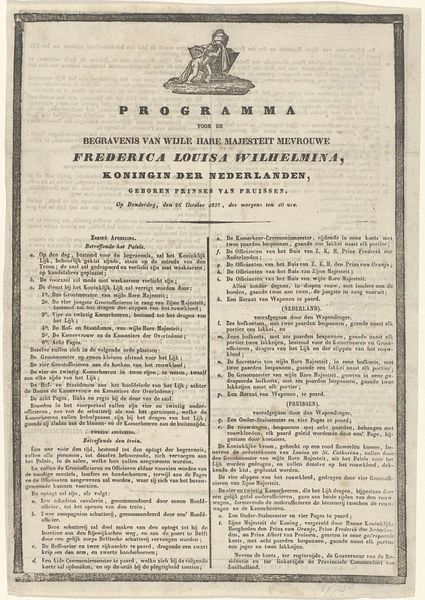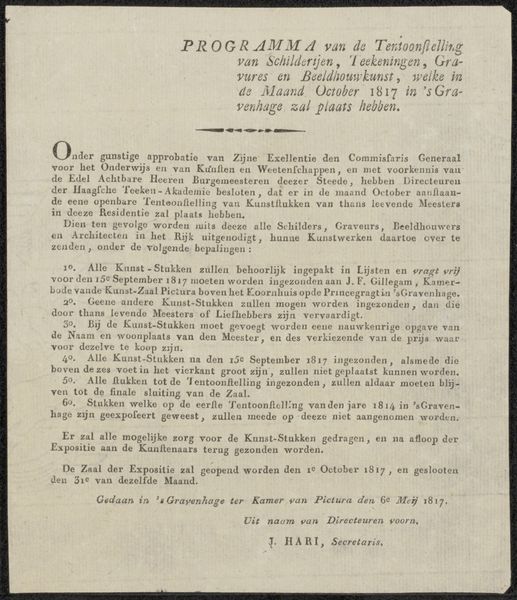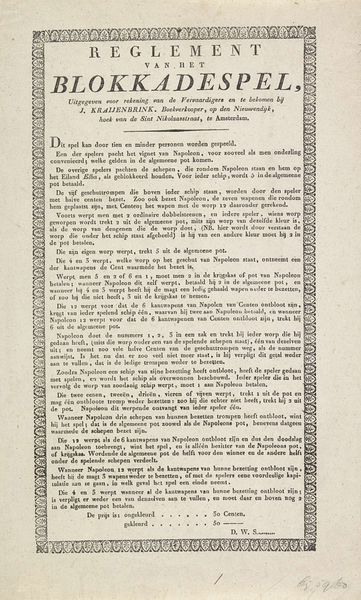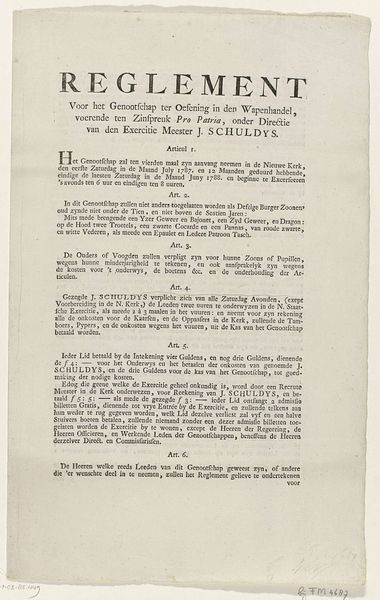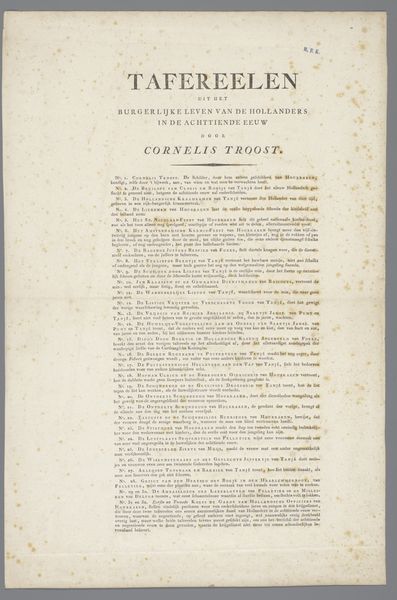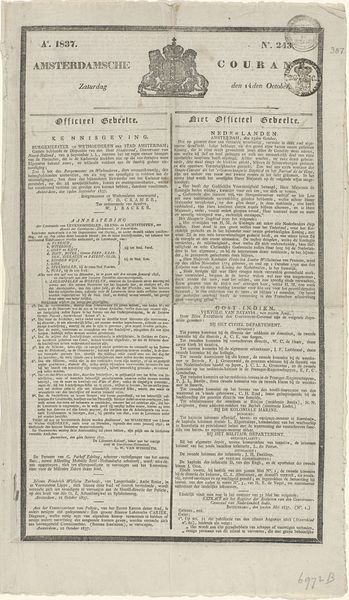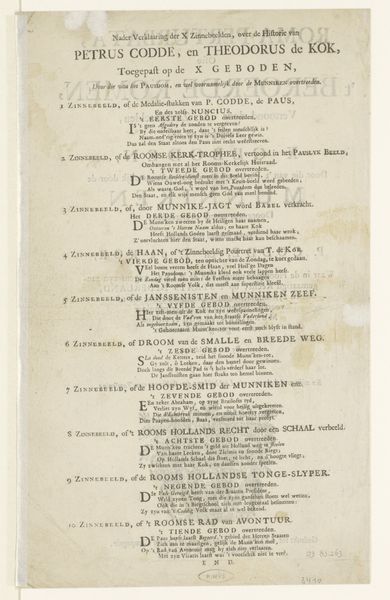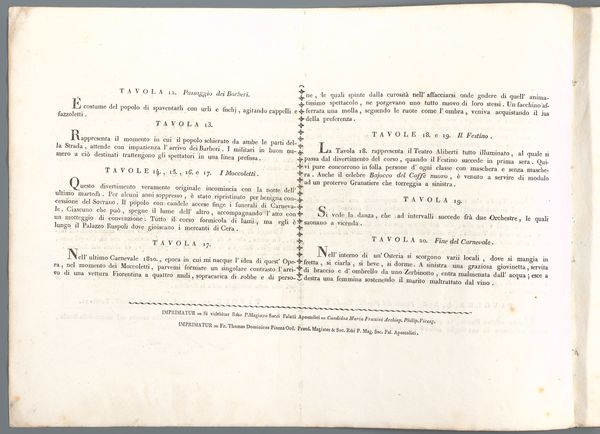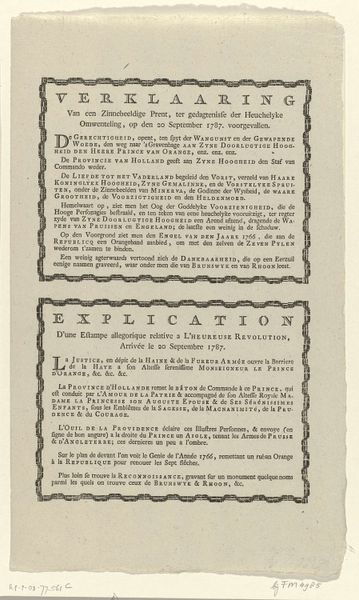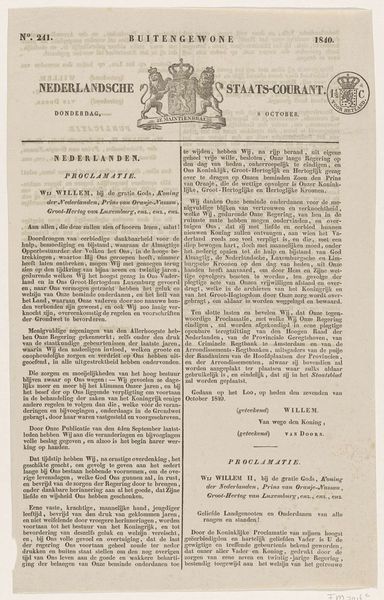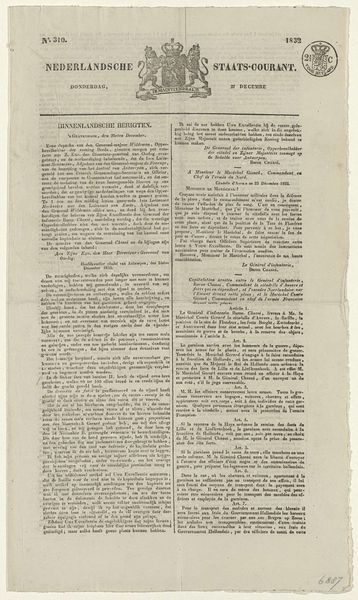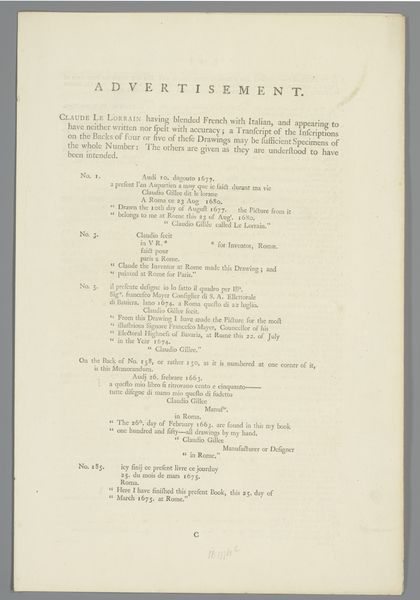
Programma voor de Begravenis van wijlen zijne majesteit Koning Willem Frederik, graaf van Nassau Possibly 1843
0:00
0:00
pevanstaden
Rijksmuseum
print, paper, typography, engraving
#
portrait
#
parchment
# print
#
paper
#
text
#
typography
#
script
#
golden font
#
engraving
Dimensions: height 340 mm, width 250 mm
Copyright: Rijks Museum: Open Domain
Editor: This print, “Programma voor de Begravenis van wijlen zijne majesteit Koning Willem Frederik, graaf van Nassau,” details the funeral arrangements for King Willem Frederik. It's quite striking—mostly text, with an engraving at the top depicting what seems to be a tomb. It looks incredibly formal. What stands out to you about this piece? Curator: As an iconographer, what first catches my eye is the deliberate presentation of royal power through visual symbols and textual pronouncements. Note the stylized typography, resembling a formal decree etched in stone. Even the “golden font,” as you see on the metadata, carries an echo of ancient proclamations and eternal memory. This work translates dynastic memory into a portable format. Do you see how the text is structured like a ritual? Editor: I do now that you mention it, yes! It really reads as an agenda or script, outlining each stage of the procession with meticulous precision. The golden font elevates even common instructions as sacred rites. It gives incredible importance to all participants. Curator: Precisely! Consider how each named official or royal guard, becomes an actor in a carefully staged drama. Even in death, the monarch's influence shapes societal actions and individual roles. Do you recognize any cultural roots within such orchestrated displays? Editor: Thinking about it, I'd guess this reflects the historical context of the Dutch monarchy establishing its presence. Curator: You are right to consider that the relatively new Kingdom of the Netherlands needed visible reminders of sovereign power. Each symbolic detail --the procession route, assigned positions, even the font itself-- reinforce an idea of inherited authority and divine appointment, contributing to the cultural narrative. I will certainly view 19th century Dutch art differently now!
Comments
No comments
Be the first to comment and join the conversation on the ultimate creative platform.
